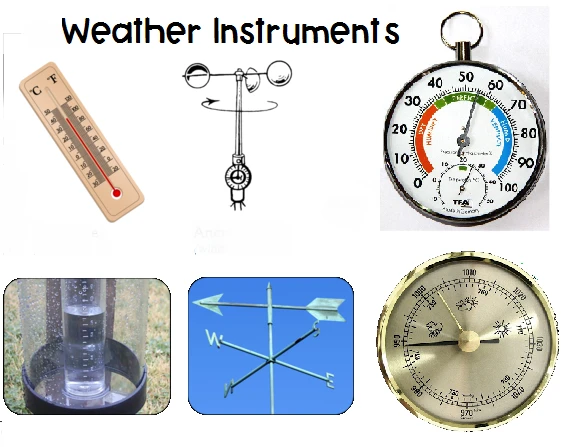
# The Instruments of the Weather
## Understanding the Tools That Measure Our Atmosphere
Weather plays a crucial role in our daily lives, influencing everything from our clothing choices to agricultural production. To predict and understand weather patterns, meteorologists rely on a variety of specialized instruments. These tools help us measure different atmospheric conditions with precision, providing valuable data for forecasts and climate studies.
### The Essential Weather Instruments
1. Thermometer
The thermometer is perhaps the most familiar weather instrument. It measures air temperature, typically using mercury or alcohol in a glass tube that expands or contracts with temperature changes. Modern digital thermometers provide even more accurate readings.
2. Barometer
This instrument measures atmospheric pressure, which is crucial for weather prediction. Falling pressure often indicates approaching storms, while rising pressure suggests fair weather. The two main types are mercury barometers and aneroid barometers.
3. Hygrometer
Humidity levels significantly affect how we perceive temperature. Hygrometers measure the amount of water vapor in the air, helping meteorologists understand moisture conditions that can lead to fog, rain, or uncomfortable humidity levels.
4. Anemometer
Wind speed is measured using an anemometer, which typically has cups that rotate in the wind. The faster the rotation, the higher the wind speed. Some advanced models also measure wind direction.
5. Rain Gauge
This simple but essential tool measures precipitation amounts. Standard rain gauges collect rainfall in a cylinder, while more sophisticated versions can measure the intensity of rainfall over time.
6. Weather Vane
Often seen atop buildings, weather vanes indicate wind direction. The arrow points in the direction from which the wind is blowing, helping meteorologists track weather systems.
## Advanced Weather Measurement Tools
Weather Balloons and Radiosondes
These instruments are launched into the atmosphere to collect data about temperature, humidity, and pressure at various altitudes. The radiosonde transmits this information back to ground stations.
Doppler Radar
This sophisticated technology uses radio waves to detect precipitation, measure its intensity, and track storm movement. It’s particularly valuable for severe weather warnings.
Satellites
Weather satellites provide a global perspective, monitoring cloud patterns, storm systems, and other atmospheric phenomena from space. They’re indispensable for tracking large-scale weather systems.
## The Importance of Weather Instruments
Accurate weather prediction depends on precise measurements from these instruments. Farmers use weather data to plan planting and harvesting, airlines rely on forecasts for flight safety, and emergency services depend on severe weather warnings to protect communities.
As technology advances, weather instruments continue to improve, providing more detailed and accurate data than ever before. This helps us better understand our changing climate and prepare for extreme weather events.
Keyword: instruments of the weather